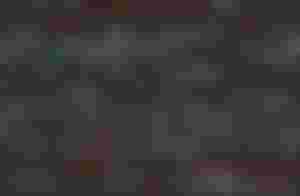The Number Systems.

The Number Systems.
It is a good and a happy morning once again and it has at least being up to good three or four days I've never showcased myself here at read.cash but all thanks to God I still have got the energy to do so and I pray you all find the same strength in all your endeavors too.
However, today we shall be looking into yet another interesting one on our computer lessons that called the number systems and most of what things we need to know about the number systems and how to identify them for those of us who are not perfectly placed when it comes to the application of computers in their daily lives.
Introduction.
For every piece of data within a computer are always help up right there as a number.
A number therefore, is represented by a symbol called a numeral.
In this discuss, I will introduce us to the numeral systems and show us how numbers are represented and manipulated within these numeral systems.
Definition.
A symbol that represents a number is called a numeral.
In addition to their usage in measuring which includes counting, numerals are often used for identification. For example, a telephone numbers, for ordering.
Another example is the serial numbers and those for codes which are of course the ones that are only or majorly found on the international standard book number (ISBN).
Therefore, we say that a number system or a system of numeration is a s writing system for expressing numbers of a given sets, using digits or other symbols in a consistent manner.
Numeral systems are sometimes called numbers systems. This usage is quite ambiguous as many systems can also be referred to many different systems of numbers such as the system of real nu.bers, systems of complex numbers, systems of exact numbers and many more systems of other numbers. But our main target here is in the positional numeral systems.
A positional or a place value numeral systems.

This is a method of representing or encoding numbers in which the position of a digit in a number, determines its values in the said numbers.
The positional numeral systems uses a fixed sets of symbols or digits for representing numbers. The numbers of all these digits are called the radix or base of the numeral systems.
The numeral system that is familiar to most people on this Earth is called the decimal numeral systems.
Its base or radix is in tens; the system uses only digits from the sets {0,1,2,...,9}
An example of such is given below:
2013 < 3210 - the 4 digit positions.
The values or the meaning of the 3 in a position of 0 in this number is 3(=3×10^0).
The value or meaning or the meaning of 1 in a position 1 in this number is 10(=1×10^1).
The value or the meaning of 0 in position 2 in this number is 0 (=0×10^2).
The value of 3 in a position 3 in this number is 2000 (=2×10^3).
The value or the meaning of the number 2013 is therefore interpreted as thus:
2×10^3+0×10^2+1×10^1+3×10^0 = 2013.
which therefore implies that the result we then get from our solvings above will now be:
2000+0+10+3 =2013. Hope you are all clear on that mathematical approach to it right?

In general, a number in the base of b is ordinarily written in the form of in-lin-2...i1i0.f1f2,...fm., where a dot or radix points separates the integer part of the length n>0. While from the functional part i.e, the f1f2,...fm, pf lenght m> 0.
When m= 0, then the number is an integer and the radix point disappears.
A common rotational convention is to write a number X in a base numeral system as Xb.
For example, 2 in base 10 represents the number 2>10.
The commonest numeral systems that are used in computer science education are as follows:
Base 10. = Decimal system.
Base 2. =. Binary system.
The base 10 is the most widely used system of numbers in the world. Its 10 digits are "0-9", and they are mostly used in mechanical counters like the meters we can find everywhere at the petrol pump stations.
The base 2 are the two digits that are between the numbers "0 and 1" and they are expressed from switches which displays the OFF & the ON controls respectively, which are also used internally by nearly all computers.
The Octal system: these are occasionally used in computing and their eight digit units are between the figures "0-7".
The hexadecimal system: this ones are also often used in computing and their sixteenth digits consists of numbers "0-9" and alphabets "A-F".( Any letter can be in the upper or in the lower case in a computer).
The base 64: this is also another widely used base in a computing system and it makes use the digits A-Z, a-z, "0-9", plus the two characters that are often "+" and "Z".
Some small whole numbers in the four commonest numerals are shown below👇
Decimal(base 10)- 0,1,2,3,4,....15.
Binary (base 2) - 0000, 0001, 0010, 0011, 0100, 0101, 0110, 0111, 1000, 1001, 1010, 1011, 1100, 1101, 1110, 1111.
Octal(base 8) - 00, 01, 02, 03, 04, 05, 06, 07, 08, 09, 10, 11, 12, 13, 14, 15, 16, 17.
Hexadecimal (base 16) - 0, 1, 2, 3, 4, 5, 6, 7, 8, 9, A, B, C, D, E, F.
Hope you enjoyed another round of lecture today on the computer about the number system this time around? I hope you did and good morning to you all.
All images are from my unsplash.com.


I wonder why you were flagged as spam, what went wrong ma